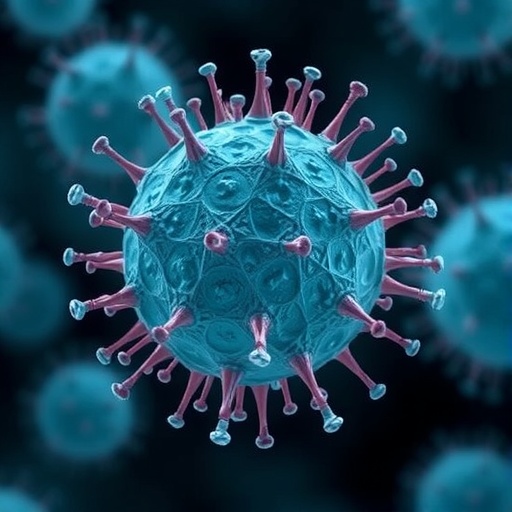A groundbreaking study published in the July 2025 issue of Aging (Aging-US) reveals new molecular insights into the aging process through the analysis of exosomes—minute extracellular vesicles secreted by cells. This research, led by Sandip Kumar Patel, Joanna Bons, and corresponding author Birgit Schilling from The Buck Institute for Research on Aging, elucidates how exosomes released from senescent cells and those circulating in human plasma carry distinctive proteomic and lipid signatures indicative of biological aging and cellular senescence. These findings herald a new frontier in understanding the molecular underpinnings of aging and open avenues for novel diagnostic and therapeutic strategies.
Cellular senescence—defined by irreversible cell cycle arrest while maintaining metabolic activity—is increasingly recognized as a driver of aging and age-related pathologies. Senescent cells secrete a heterogeneous mixture of factors known as the senescence-associated secretory phenotype (SASP), which can propagate inflammation and tissue dysfunction. This study highlights that exosomes are a critical yet previously underappreciated constituent of the SASP, serving as vehicles for the transfer of aging-associated molecular signals between cells.
Using advanced proteomic and lipidomic profiling, the research team analyzed exosomes derived from senescent human lung cells alongside circulating exosomes isolated from the plasma of healthy young adults (aged 20–26) and older adults (aged 65–74). Their comprehensive datasets identified over 1,300 proteins and 247 lipids within exosomal cargo, many of which exhibit age-dependent alterations. Such quantitative molecular characterizations extend the current understanding of exosome composition in the context of aging, allowing for the identification of robust biomarkers.
Among the proteomic changes observed in exosomes from older individuals was an increased abundance of proteins linked to inflammatory pathways and a concurrent reduction in antioxidative defense molecules. This proteomic shift underscores a pro-inflammatory and oxidative stress milieu characteristic of aging tissues. In contrast, lipidomic analysis revealed altered membrane lipid composition in exosomes from senescent cells, implicating changes in membrane integrity and cellular stress signaling as hallmarks of cellular aging processes.
Notably, the study reports variations in the microRNA (miRNA) landscape within circulating exosomes of aged individuals. Specific miRNAs, including miR-27a and miR-874, were significantly altered and have been previously implicated in neurodegenerative processes and chronic systemic diseases. These miRNAs could serve as minimally invasive biomarkers to gauge biological aging and predict age-associated disease susceptibility.
The multifunctional role of exosomes in mediating intercellular communication situates them as potential effectors in the propagation of secondary senescence—a phenomenon where senescence spreads from affected cells to neighboring cells through paracrine signaling. This work suggests that the content of senescent cell-derived exosomes could exacerbate tissue aging by facilitating this spread, thereby amplifying deleterious effects within aged microenvironments.
Importantly, the integration of multi-omics data offers a holistic perspective of exosome-mediated signaling in aging, encompassing proteins, lipids, and RNA molecules. This integrative approach enhances the resolution at which biologically relevant changes can be detected, transcending traditional single-molecule studies and improving the potential to identify targets for modulating the aging process.
Although constrained by a relatively modest cohort size, the study’s methodological rigor and comprehensive analyses provide compelling early evidence that the molecular cargo of exosomes modulates and reflects biological aging. This could pave the way for the development of exosome-based diagnostics, wherein circulating exosomal components serve as real-time indicators of cellular senescence burden and systemic aging status.
From a therapeutic perspective, manipulating the release or composition of exosomes secreted by senescent cells could attenuate the detrimental systemic effects of senescence. Such interventions might involve reducing the dissemination of pro-inflammatory signals or restoring antioxidant capacity through engineered exosomes, representing an innovative strategy for combating age-related dysfunctions.
The identification of age-specific proteomic and lipidomic signatures in exosomes also raises compelling questions about the mechanisms governing exosome biogenesis, selective cargo loading, and target cell interactions in aging tissues. Further research into these mechanistic aspects will deepen our understanding of how exosomes regulate organismal homeostasis during aging and disease progression.
This study underscores the immense potential of exosomal research within geroscience, solidifying the concept that extracellular vesicles are not merely cellular debris but dynamic messengers orchestrating complex aging phenotypes. Continued exploration in this vein promises to unravel the sophisticated molecular language of aging and unlock transformative clinical applications.
In summary, the findings presented by Patel et al. represent a pioneering stride in aging biology, revealing that exosomes carry distinctive aging-associated molecular signatures capable of mediating intercellular communication and reflecting systemic senescence. Such insights establish an innovative platform for biomarker discovery and therapeutic targeting in age-related diseases, signifying a paradigm shift in our approach to understanding and manipulating the aging process.
Subject of Research: Not applicable
Article Title: Exosomes released from senescent cells and circulatory exosomes isolated from human plasma reveal aging-associated proteomic and lipid signatures
News Publication Date: 30-Jul-2025
Web References:
DOI link
Image Credits:
Credit: Copyright © 2025 Patel et al. This is an open access article distributed under the terms of the Creative Commons Attribution License (CC BY 4.0).
Keywords: aging, proteomics, senescence, exosomes, data-independent acquisitions




